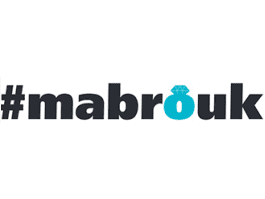Pnina Souid
People think it will never happen in their family – until it does, and often, with tragic consequences.
Drug addiction is exceedingly prevalent in modern society, and our community has not been spared from this scourge that has inflicted so much pain on so many people. The good news is that there are caring, devoted, capable individuals who are working hard to address the problem and provide help.
Mr. Victor Mann is one of the many community members who found themselves living a life that was not a life. Fortunately, he was able to rebuild himself thanks to a residential rehabilitation program in Israel called Retorno. After having undergone the successful process of rehabilitation, Victor now works for the facility that saved him and so many others who had struggled with drug addiction, gambling addiction, and numerous other addictions that many of us are not even aware of.
Victor was only 14 years old when tragedy struck his family, with the untimely passing of his father. Without his father to guide him, Victor became rebellious. He was tossed from school to school before he finally landed in a school where he felt at home, an institution for young men who, like him, were challenged. It was here that Victor’s experience with drugs began. He would get together with friends and use recreational drugs, believing that these substances helped make him stronger and better suited to cope with his difficult life. Of course, what he was feeling was a false, delusional sense of security. Victor relied on these drugs – some of which could be obtained with a simple prescription – for ten years. He used drugs to go to sleep, and drugs to wake up. If he needed to feel certain emotions – there were drugs for that, too.
As he continued feeding his dependency, Victor distanced himself from everyone, and sought out any form of escape from reality, eventually added gambling to his list of addictions.
He reached the point where he found no purpose or reason for living. Baruch Hashem, Victor reached out to his only friend, through whom he found his way to Retorno, a rehabilitation center in Israel, where he is now employed fulltime, working for the institute’s outreach department.
The Tragedy, the Letter, and the Open Check
The story of Retorno begins in Mexico, where a man addicted to cocaine revealed his problem to his friend and rabbi, Rabbi Eitan Eckstein. Rabbi Eckstein was shocked, as this friend was very successful, and seemed to be living a normal, happy, and healthy life. Initially, Rabbi Eckstein thought that the fellow should admit himself to a rehabilitation center, but the man insisted that he should find a therapist, instead.
That night, the friend’s wife called Rabbi Eckstein in hysterics. Her husband had locked himself in his office. The police were called, and broke through the door. The man was lying there lifeless, killed by a drug overdose.
Later, a blank check and a letter were discovered. The friend, who left a large fortune, had written to Rabbi Eckstein, requesting that he use the blank check to open a facility to help those suffering from addiction. The man understood that there were many, like him, who desperately needed help, but were afraid of the stigma associated with their condition, and thus decided to keep struggling alone.
And so, in 1990, Rabbi Eckstein opened Retorno, a rehabilitation facility in Mexico. He then opened a branch in Israel upon returning there several years later. The facility consists of a residential program, and an outpatient clinic designed for those who had previously gone through the residential program.
Joining a Rehabilitation Community
Victor Mann traveled to Israel with his mother, and upon arrival, he went straight to a detox center, because patients’ blood must be completely free of toxins before beginning rehabilitation. (Retorno has since opened its own detox center.) His mother, meanwhile, stayed with relatives. Every step of the process was carefully arranged by the outreach agent, Nicole.
Once Victor was ready to become an inpatient of Retorno and participate in the full residential treatment program, he entered what is called the “kehillah tipulit – treatment community.” The word kehillah, of course, means “community,” referring to a group of likeminded people, united by a common cause or goal. Everyone at Retorno – the social workers, outreach workers and patients – share a commitment to the rehabilitation process of themselves or the patients under their care.
Situated on a hilltop near Beit Shemesh, Retorno is currently the only fulltime, extensive, addiction rehabilitation program run in strict adherence to halachah. There are separate programs for men and women, with the men’s program being staffed by men, and the women’s program, by women. There is one group for ages 17-24, and another for older patients.
The program removes the addict from his or her life’s stresses by creating a world unto itself within the kehillah. Everyone in the kehillah is expected to fully participate in communal life, by working in basic maintenance, serving as waiters and cooks, and assuming other responsibilities.
Retorno’s programs treat not only drug addiction, but also other addictions, such as gambling and alcohol.
For Victor, Retorno was not only a game-changer, but, quite literally, a life-saver. He was assigned a social worker, and underwent the full range of therapies, which include horse therapy and animal therapy. The program is based on the well-known “12-point program” developed by the legendary and esteemed Hassidic psychiatrist, Rabbi Dr. Abraham Twersky, zt”l.
Soon after beginning his rehab, Victor decided he wished to permanently settle in Israel. The Retorno staff did everything they could to help him through the aliyah process, including enrolling him in an ulpan program so he could learn Hebrew.
Retorno encourages patients in the later stages of rehabilitation to find employment outside the kehillah. As Victor was still in the middle of the process of aliyah, Retorno offered him a volunteer position in their outreach department, which became a paying job once he became an Israeli citizen.
The “Bar”-Mitzvah
In an exclusive interview with Community, Rabbi Eckstein described the culture shock he experienced upon arriving in Mexico 35 years ago with his wife and five young children, having been sent from Israel to serve a as a congregational rabbi. He was astonished by the prevalence of drug and alcohol abuse not only among lower-class Mexicans, but also within the upscale Jewish community of Mexico City. He shared the joke made about the community’s “bar”-mitzvah celebrations, which, sadly, place far more emphasis on the “bar” than on the mitzvot…
The death of his congregant opened his eyes to the gravity to the problem, and he set out to do something about it. Using the open check left by his deceased friend, and other donations, he established Retorno, and then built the facility in Israel after returning there four years later.
Rabbi Eckstein, who comes from a Mizrachi background, had learned in the famed Ponevitch Yeshiva in Bnei Brak. Upon his return to Israel, he went to ask his illustrious Rosh Yeshiva, Rav Eliezer Shach, zt”l, whether he should take time away from his Torah learning to build this rehabilitation program, which he felt Israel’s haredi community desperately needed.
Rav Schach replied by asking whether this project was necessary to save lives, and Rabbi Eckstein answered in the affirmative. Rav Shach told him to pursue this endeavor, and was very supportive of Retorno.
Rabbi Eckstein, a published author, is an expert in the field of addiction treatment. His unique understanding of what addiction is, and the various available treatment methods, has been a game-changer in addressing a problem that has been swept under the proverbial carpet for far too long. His published works include an outreach manual, tackling the challenge of reaching out to an addict. Many addicts deny having a problem, assuming that they solve their problems with their “painkillers” – such as prescription drugs, illegal drugs, gambling, shopping, alcohol, or other addictive behaviors. Very often, the first and most difficult step is arriving at the realization that these behaviors are not the solution, and instead create a much larger problem.
Dizziness and Vertigo
In one of his books, It’s Your Move, Rabbi Eckstein tells of an astute observation made by one of Retorno’s patients, who had served as a fighter pilot in the Israeli Air Force:
Since starting treatment at Retorno three months ago, I’ve been plagued by a question: What’s the difference between use and abuse? Today I finally got it! It’s the difference between dizziness and vertigo. Both of these conditions are dangerous for a pilot, but they are essentially different. With dizziness, a pilot knows he has a problem. With vertigo, he’s absolutely sure he has no problem.
Substance use is like dizziness. In the early stages of use, I knew I was a fake. I lied to everyone – my wife, my parents, my friends, and my unit commanders. But I knew I was doing something wrong. However, at some point I stopped feeling bad about what I was doing. Instead I grew confident about my actions and my direction. I had every reason, every excuse to live in a world of drugs and lies. For me, it was the real world…
This reminded me of an incident that occurred one day during an exercise when our fighter jets were training over the sea.
At one point, I wanted to distance myself a bit from the sea, so I pulled my plane upward— but without checking my instruments. Suddenly I heard my commander shout that I was diving into the sea! This was the first time I ever experienced vertigo. I was certain that the lights twinkling underneath me were fishing boats and the lights twinkling above me were stars. Nevertheless, I followed protocol; I ignored my feelings and checked my instruments which told me that down was up and up was down.
I remember the difficulty in acting against my internal reality. To disconnect from what you believe and give control over to a power greater than yourself. It’s scary. It’s hard. It’s insane. But it’s the only way.
Retorno helps the addict realize that his world of addiction is not real, that the addictive behavior is the wrong solution to a problem which needs to be addressed in healthier ways.
Horse and animal therapy play an important part of the treatment plan. Horses are very sensitive to their riders, and so by riding a horse, the patient learns how to navigate the road ahead. There is a petting zoo where patients care for animals, and also overcome certain fears by holding and feeding the animals.
Each patient has a program personally designed for his or her individual needs. The success of the Retorno methodology has been recognized worldwide, and patients come from North America, South America, the United Kingdom, South Africa, and elsewhere to avail themselves of its proven techniques.
Rabbi Eckstein recently traveled to Argentina, to discuss that community’s addiction problems. The community sent representatives to Israel to receive training at Retorno, in preparation for opening a new branch in Argentina.
An Investment for the Future
Victor Mann describes the kehillah as a warm and accepting environment, and says that the beautiful grounds make for a relaxed, comforting atmosphere. Retorno’s rate of success, he says, far exceeds that of other rehabilitation centers.
As part of Retorno’s outreach and reception staff, Victor speaks with addicts and their families, explaining to them the programs, the treatment methods, the requirements, and the cost. He also serves as the patients’ liaison from the time they walk through the door until their leave. Additionally, Victor works for Retorno’s international awareness campaign, which publishes articles, engages on social media, and connects with other organizations to raise awareness about the dangers of addiction.
Victor’s message to the community is that the Retorno program is an investment in the patient’s future. Whether the patient wants to stay in Israel or go back home to New York, Retorno offers the best opportunity to get his or her life back in track. The journey to recovery is not always smooth or simple, but patients at Retorno have a supportive hand at every step of the way.
For more information about Retorno, please contact Victor Mann by email at reception@retorno.org, or by phone/WhatsApp at (011972) 050-239-6065.












